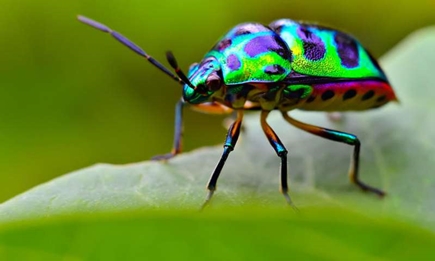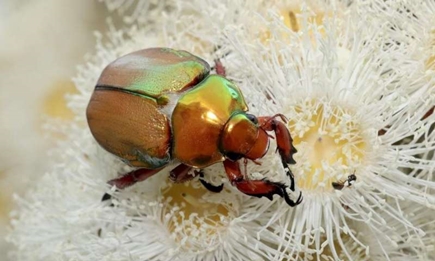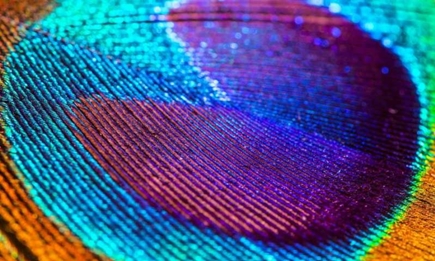|
NOVIDADES
Some of the most vibrantly colored creatures in the animal kingdom don't owe their amazing colors to pigment. Instead, they cover themselves with microscopic structures that fine tune the way they reflect light. Now, these animals are inspiring a new generation of nanotechnology.  Generally, when we think about colour, we think of pigments and dyes. Credit: Shutterstock
"Can I give you an example?" she asks, pointing at a collection of shiny-shelled beetles on the table in front of her. "We have a lot of beetles that are so shiny and metallic that they are almost mirror-like and the question is 'why?'" Within the BioInspiration Initiative, Professor Stuart-Fox is collaborating with Professor Ann Roberts, from the University's School of Physics, who is working on manufacturing structural color for technological applications like more compact displays and higher resolution cameras. "In those materials the different wavelengths will be selectively absorbed and the others will be reflected back, and this is what we perceive as being colored."  Structural colour allows for effects like iridescence. Credit: Shutterstock
Tailoring the size and shape of these structures means scientists can change which parts of the visible spectrum a surface interacts with. They can precisely tune which wavelengths are reflected, creating ultra-pure colors, as well as which wavelengths are transmitted, making the surface transparent to select colors or polarisations of light. "There are all these optical effects that you get with structural color that you don't get with pigment-based colors," Professor Stuart-Fox explains. Structural color allows for effects like iridescence, where a surface changes color depending on the viewing angle. You can see this on display in the plumage of hummingbirds. This same effect is responsible for the rainbow-colored reflections you see on the bottom of CDs and DVDs, and the color-changing pearlescent paint on cars.
 Physicists are working out ways to harness structural effects for technological applications. Credit: Shutterstock
"The alternative explanation is that birds and other animals can easily pick out these shiny objects, but they avoid them—they think 'that is not food'. But neither of these ideas have been tested." Professor Stuart-Fox is setting up a large experiment placing hundreds of replica beetles in rainforests and open environments to try and distinguish between the camouflage and avoidance theories. She is also running a visual search task that has people wearing mobile eye trackers to see how effective the beetles' camouflage is against humans. One way to make structural color in the lab is to carve patterns into a material using electrons in a process called electron beam lithography. But this can be time-consuming and expensive, and it can only be used on small patches of material. "We're actually working on developing a more scalable approach," says Professor Roberts. Her work involves producing reusable molds that stamp structure into soft plastics, which is much more efficient at covering large surfaces than electron beam lithography. It also simplifies the coloring process significantly. If we look at standard color printing, it requires layering several different inks, which is why inkjet printers have multiple color cartridges. But structural color can achieve the same result with a single stamp. Smaller pixels allow for higher resolutions and more compact technology. Credit: Shutterstock
To achieve things like higher resolution, we need to make the pixels in these devices smaller. Pixels use tiny red, green and blue filters to produce the colors that we see on our screens. So, pixel size is fundamentally limited by the size of the color filters you can produce. Pigment-based filters in current devices are generally a few micrometers thick. But with structural color, Professor Roberts can create filters that are around ten times thinner, moving into the nanometer scale. Smaller pixels allow for higher resolutions and more compact technology. Her recent research involves integrating a structural color filter directly into a silicon chip. "The filters that produce red-green-blue are then part and parcel of the actual device, you're not using a big chunky dye-based filter that you put on top of it," she says. Not only does this allow her to make smaller filters, it also avoids the manufacturing difficulties associated with aligning pigment filters with pixels on the micro scale. Professor Stuart-Fox says the utility of structural color is in its diversity. "Biological structures tend to be complex, but they use a few basic building blocks," she says. "Now that we have the capacity to manufacture more complex structures and materials, we have more capacity to draw on biology as a source of inspiration." By Kaih Mitchell and Matt Thomas, University of Melbourne. Accessed: Jan 06, 2020. |
|||||||||||||||||||||||||